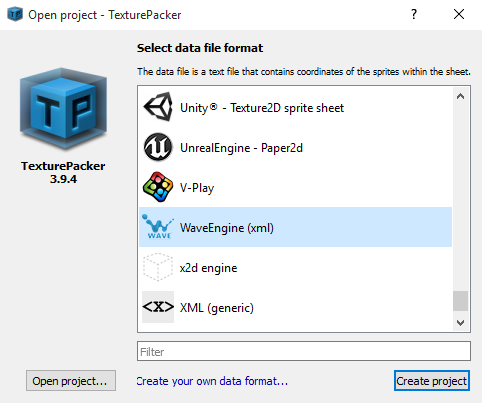
Texturepacker tutorial how to#
You even have a tutorial on how to use it. TexturePacker is officially supported by UE4. We have created art that looks terrible because of this problem. You can recreate it and you can see it happening.ĩ0% of my game has artifacts that shouldn’t be there.

I really do not understand why you see no problem with my report. use Texture Packer in cocos2d game development in the form of a tutorial. Now do you understand why it is super important to fix this issue that is created ONLY by texturepacker and not by importing one by one the sprites of that texture sheet? The translated manuscripts of all the tutorials provided in this blog are from. We either run out of VRAM or we use bi linear to hide some of the artifacts that compression creates. extends Control func ready(): var img getviewport ().gettexture ().getdata Flip on the Y axis. It does not recognise drawpolygon (points,colour) function in extends Viewport script. The only way to “win” back some of that is to use bi linear. When I make a small viewport node as a child of the root viewport, it does not allow drawing of the polygon in the draw function. With that setting we wouldn’t need anything but the “default”, but we are forced to use the default compression of ue4 resulting in great quality loss. We simply cannot use the uncompressed method because of the texture size that is 16.5mb for a 2048x2048.

It is vital for our games.Īnother reason has to do with texture compression. If you need help on starting with melonJS, we recommend you to first check either our platformer or space invaders tutorials. What i was saying earlier is that us paper2d guys need the bi linear options. As this tutorial is focusing on using TexturePacker, we will assume that you are already familiar with melonJS and that you have at least a first project up & running. Please test the single png example i gave you and if it does not create any artifacts when using bilinear please report this as a bug because it has destroyed my game.

I need to see this fixed before i go any deeper. Without it everything appears pixelated and flickers.Also some games benefit from the “soft” look.Īlso if you do not use bilinear there is another issue with unreal that makes rendering jittery. You are literally telling me to import all pngs one by one if i do not want artifacts.Īnd yes there is a reason why we need bi linear for 2d games especially when you change the FOV. If you import the single chest png that i gave you and set it to bilenear it does not create any artifacts, does it? Then why it does so on every texturepacker export? This is not standard and expected behavior. I would partially agree with you that this would be an non issue if it occurred for single sprites as well. It is for ALL sheets exported from texturepacker. This is not on this specific texture sheet.


 0 kommentar(er)
0 kommentar(er)
